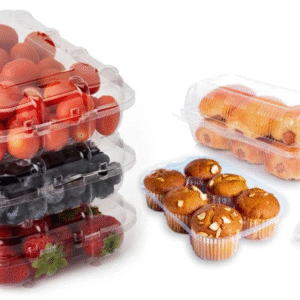Introduction
Backing paper plays a crucial role in various products, especially in the packaging, labeling, and adhesive industries. This seemingly simple component can significantly influence the durability and longevity of the end product. Understanding the impact of backing paper on product durability involves exploring its material properties, application methods, and environmental factors.
What is Backing Paper?
Definition and Purpose
Backing paper is a type of paper or polymer film used as a protective layer for adhesive products. It serves multiple purposes, including:
- Protection: Prevents damage to the adhesive before application.
- Ease of handling: Provides a surface that can be easily handled during the production process.
- Storage: Allows for safe storage of adhesive products without degradation.
Types of Backing Paper
There are several types of backing paper, each with unique properties that affect product durability:
- Release Liners: Typically silicone-coated to allow easy peeling of adhesives.
- Standard Paper: Commonly used for labels and stickers, available in various weights and finishes.
- Polymer Films: Made from materials like PET or PVC, offering enhanced durability and moisture resistance.
The Role of Material Properties
Strength and Composition
The strength of backing paper is crucial for maintaining product integrity. High-quality backing paper can withstand stress during application, while inferior products may tear or degrade.
Tensile Strength
Tensile strength measures how much force a material can withstand while being stretched or pulled. Backing papers with high tensile strength ensure that the adhesive remains intact during application, minimizing the risk of damage.
Moisture Resistance
Certain backing papers are treated to resist moisture, which is vital in humid environments. Moisture can compromise adhesive properties and lead to product failure.
Thickness and Weight
The thickness and weight of backing paper also influence durability. Thicker papers provide better protection but may increase production costs. Conversely, thinner papers may be more economical but can lead to issues such as tearing or curling.
Application Methods
Adhesive Bonding
The method of applying adhesive to backing paper significantly affects durability. Proper adhesion ensures that the backing paper remains securely attached to the surface of the product, preventing delamination or peeling.
Coating Techniques
Different coating techniques can enhance the durability of the backing paper. For instance, hot melt adhesives provide strong bonds but require precise application to avoid issues such as uneven distribution.
Cutting and Finishing
The process of cutting and finishing backing paper also impacts its durability. Precision cutting techniques ensure that the edges are clean, reducing the risk of fraying or tearing during application.
Environmental Factors
Temperature and Humidity
Environmental conditions play a critical role in the performance of backing paper. High temperatures can cause adhesive to soften, while excessive humidity may weaken the bond between the backing paper and the adhesive.
Storage Conditions
Improper storage of products with backing paper can lead to degradation. Ideally, they should be stored in a cool, dry place to maintain their integrity.
UV Exposure
Ultraviolet (UV) light can cause certain types of backing paper to degrade over time. Products exposed to sunlight may experience changes in color and strength, affecting overall durability.
Testing Durability
Laboratory Testing
To assess the durability of backing paper, various laboratory tests can be conducted:
- Peel Strength Tests: Measure the force required to peel the backing paper from the adhesive.
- Shear Strength Tests: Evaluate the ability of the adhesive to withstand forces applied parallel to the surface.
Real-World Testing
In addition to laboratory tests, real-world testing is crucial to understanding how backing paper performs in practical applications. This includes evaluating products under typical usage conditions and monitoring for signs of wear and tear.
Case Studies
Case Study 1: Adhesive Labels
In the adhesive label industry, backing paper impacts not only the durability of the label itself but also its performance in various conditions. A study comparing standard paper labels with polymer film labels found that the latter exhibited significantly higher resistance to moisture and UV exposure, resulting in longer-lasting labels.
Case Study 2: Medical Tapes
In the medical field, the durability of backing paper is critical for patient safety. Medical tapes with high-quality backing paper showed superior adhesion and resistance to moisture, leading to longer wear times without compromising patient comfort.
Innovations in Backing Paper Technology
Sustainable Materials
Recent advancements in backing paper technology have focused on sustainability. Biodegradable and recyclable backing papers are becoming more common, offering similar durability while minimizing environmental impact.
Enhanced Performance Coatings
Innovative coatings, such as those that enhance moisture resistance or UV stability, are helping to improve the durability of backing papers. These technologies are critical for products that must withstand harsh conditions.
Conclusion
The impact of backing paper on product durability is multifaceted, encompassing material properties, application methods, environmental factors, and technological innovations. As industries continue to evolve, understanding the significant role of backing paper will be essential for ensuring product longevity and performance. By investing in high-quality backing paper and adopting best practices in application and storage, manufacturers can enhance the durability of their products, leading to improved customer satisfaction and reduced waste.





